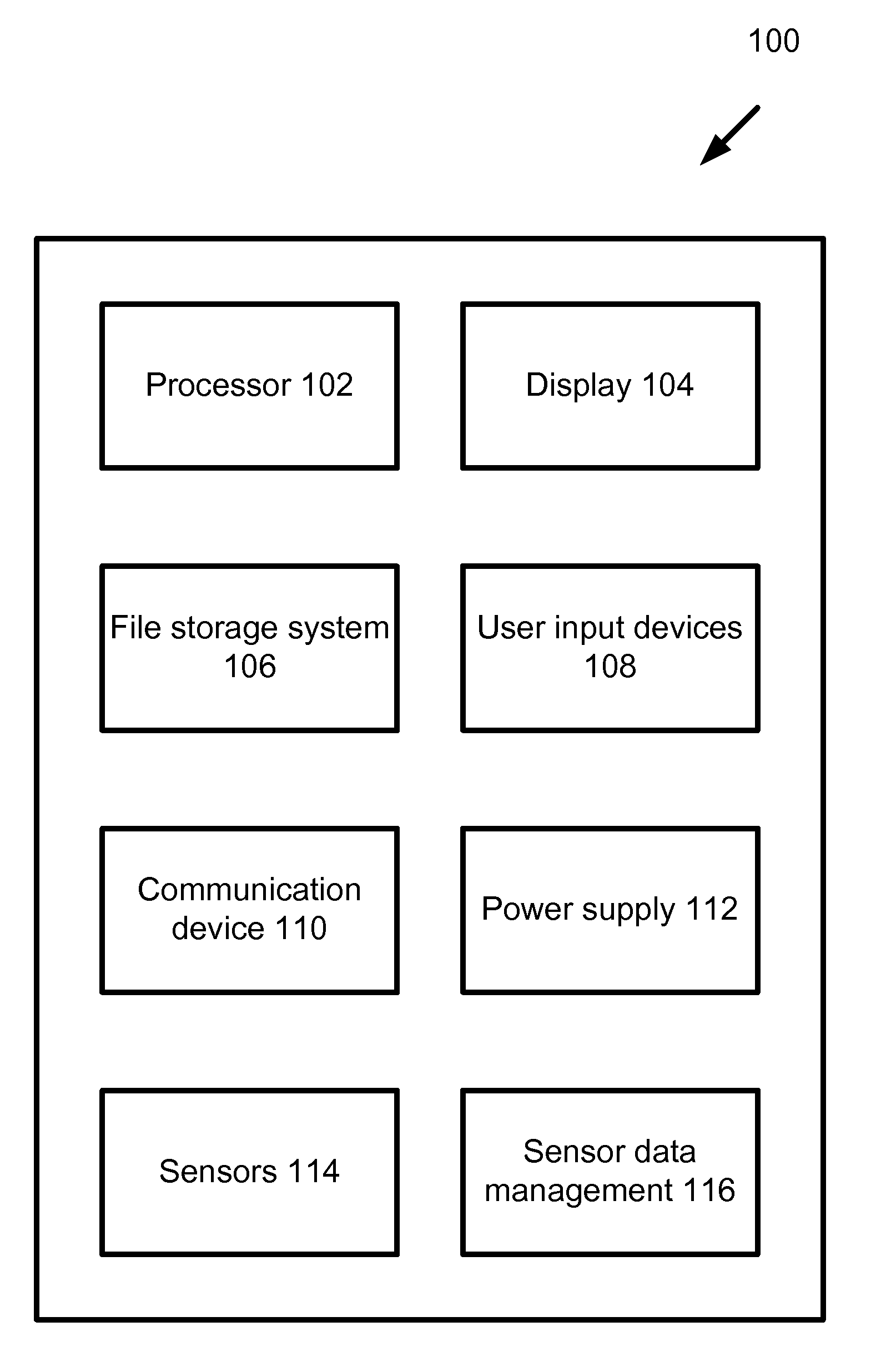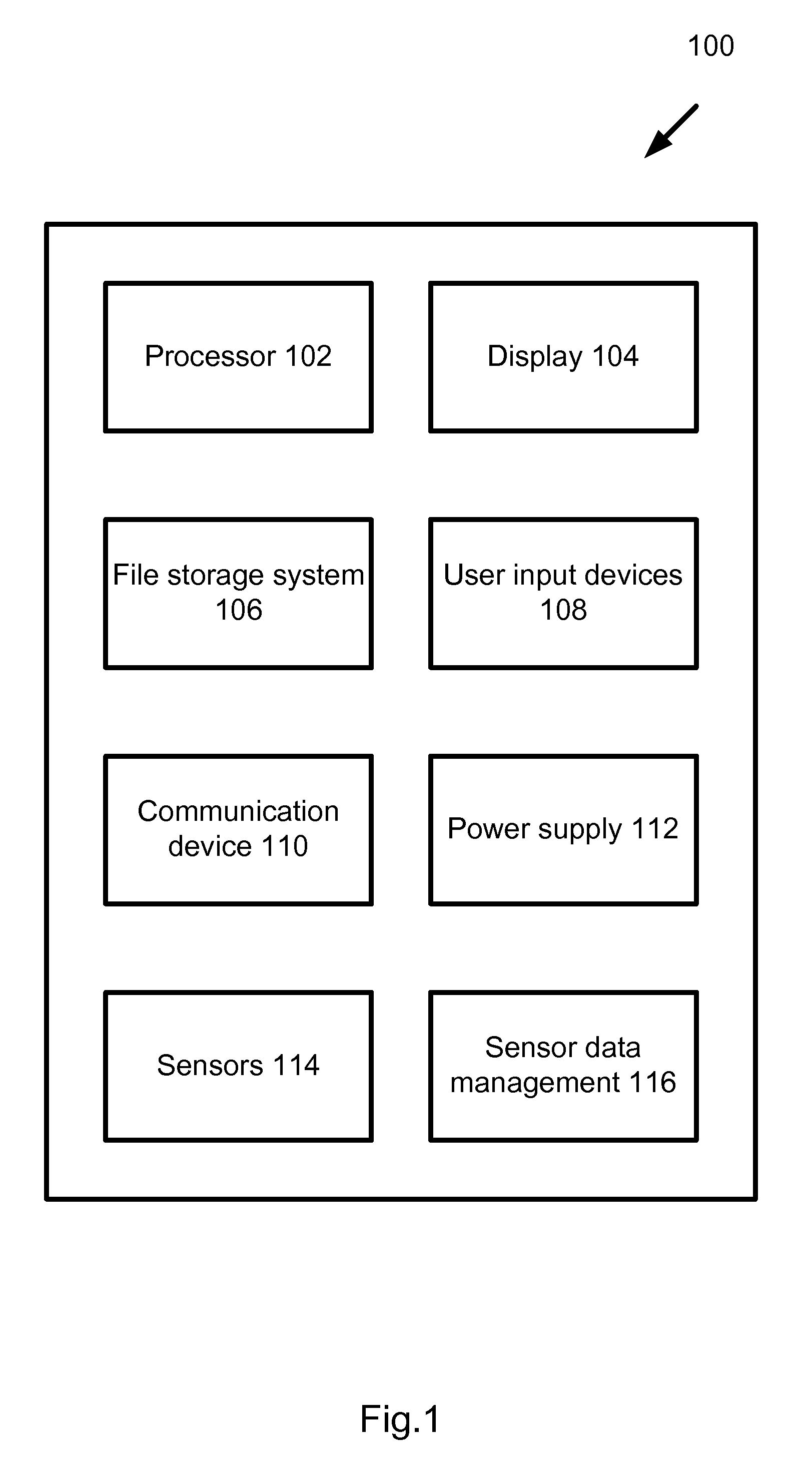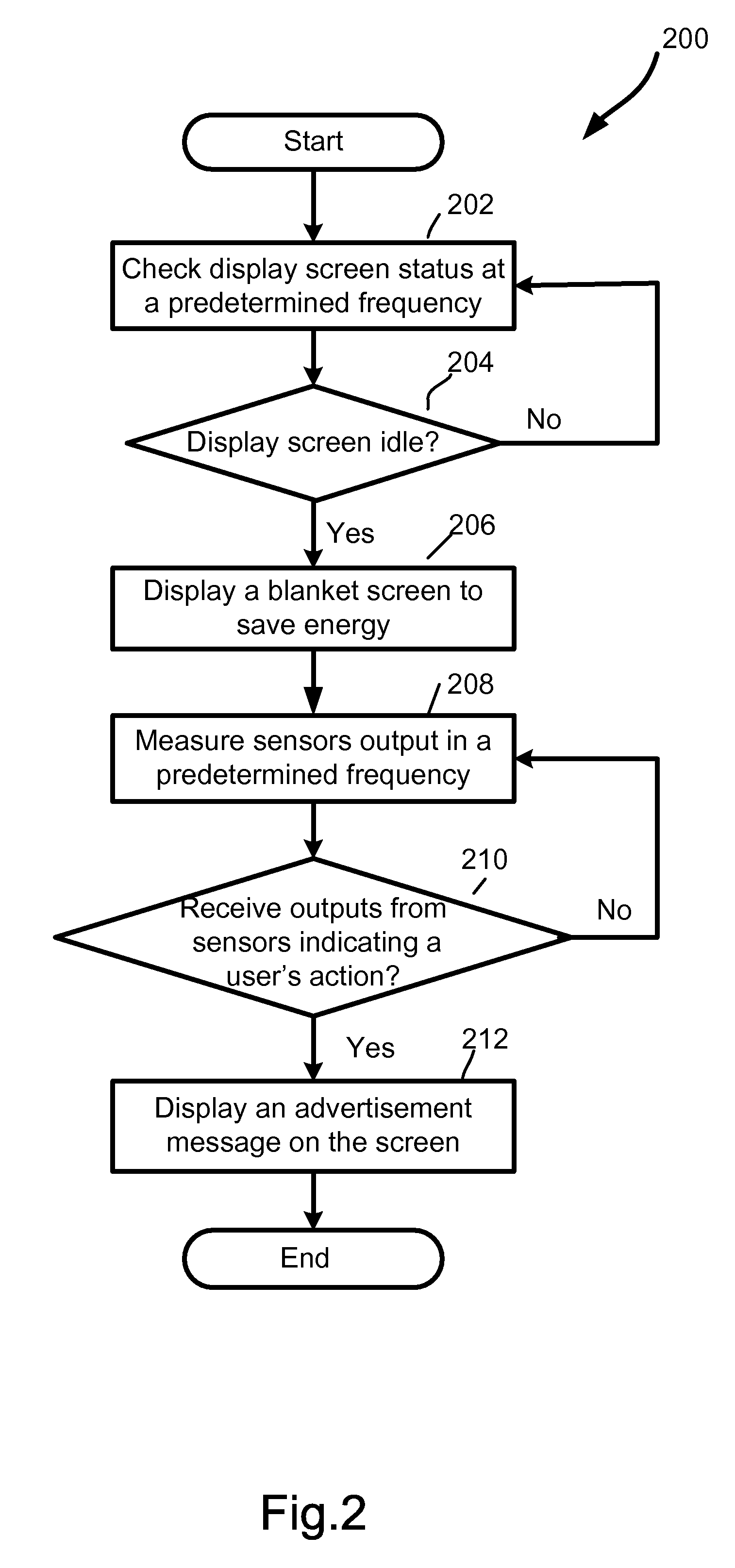Delivering Advertisement Messages to a User by the Use of Idle Screens of Mobile Devices with Integrated Sensors
- Summary
- Abstract
- Description
- Claims
- Application Information
AI Technical Summary
Benefits of technology
Problems solved by technology
Method used
Image
Examples
Embodiment Construction
[0027]References will now be made in detail to a few embodiments of the invention, examples of which are illustrated in the accompanying drawings. While the invention will be described in conjunction with the particular embodiments, it will be understood that it is not intended to limit the invention to the described embodiments. To the contrary, it is intended to cover alternatives, modifications, and equivalents as may be included within the spirit and scope of invention as defined by the appended claims.
[0028]The present system comprises at least one advertising server operated by an advertisement broker and at least one mobile device with a display screen and a user input device. A mobile computing and communication device is used as an exemplary case in this disclosure. The method, however, applies to all mobile devices with a display screen, a user input device and a communication means, which are operated with a battery to supply power. The server and the mobile device are co...
PUM
 Login to View More
Login to View More Abstract
Description
Claims
Application Information
 Login to View More
Login to View More - R&D
- Intellectual Property
- Life Sciences
- Materials
- Tech Scout
- Unparalleled Data Quality
- Higher Quality Content
- 60% Fewer Hallucinations
Browse by: Latest US Patents, China's latest patents, Technical Efficacy Thesaurus, Application Domain, Technology Topic, Popular Technical Reports.
© 2025 PatSnap. All rights reserved.Legal|Privacy policy|Modern Slavery Act Transparency Statement|Sitemap|About US| Contact US: help@patsnap.com



